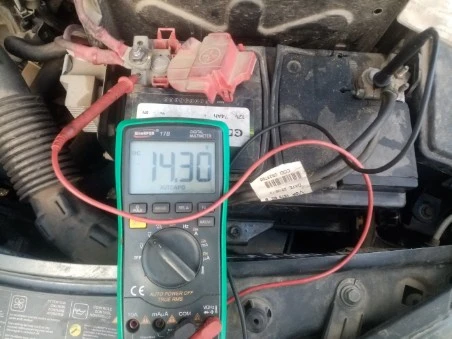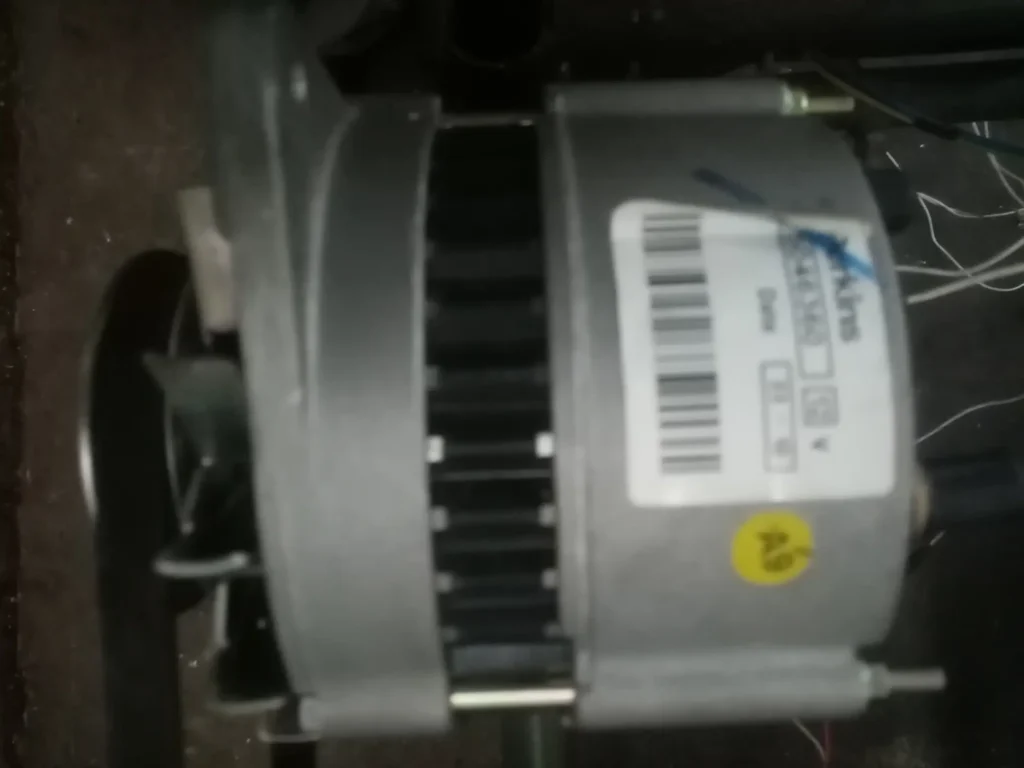🚗 How to Test an Alternator – The Secret Signs Your Car is About to Die
Picture this: You’re miles from home when your headlights dim. The dashboard flickers. A warning light glows red: “Battery Alert.” Your heart races. Is it the battery? Or is your alternator silently failing?
Most drivers don’t know how to test an alternator until it’s too late. And by then, they’re stuck on the side of the road, begging for a jump start that won’t last.
But what if you could spot the warning signs in minutes with just a multimeter or even no tools at all?
Buckle up. Today, you’ll learn:
✔ 3 foolproof ways to test your alternator (including a dead-simple headlight trick)
✔ The terrifying symptoms most mechanics won’t tell you
✔ How to avoid getting scammed on repairs
By the end of this guide, you’ll know exactly how to test an alternator—before it leaves you stranded. Let’s dive in.
Table of Contents
Understanding Your Charging System
Before testing, it’s crucial to understand how your vehicle’s charging system works:
The Three Key Components:
- Battery – Provides initial power to start the engine.
- Alternator – Generates power while engine runs (13.5-14.5V).
- Voltage Regulator – Controls alternator output (built-in on modern vehicles).
How They Work Together:
- The battery starts the engine.
- The alternator takes over, powering the vehicle.
- Excess power charges the battery.
- Voltage regulator prevents overcharging.
Why Testing Matters:
A failing alternator can:
- Leave you stranded unexpectedly.
- Destroy a good battery in 24-48 hours.
- Cause expensive electrical damage.
How To Test An Alternator
Method 1: Multimeter Test (Most Accurate)
What You Need:
- Digital multimeter ($10-50)
- Safety gloves
- Running vehicle

Step-by-Step:
- Park on level ground, set parking brake
- Turn off all electrical loads (lights, radio, AC)
- Set multimeter to 20V DC setting
- Connect:
- Red probe to battery positive (+)
- Black probe to battery negative (-)
- Record voltage with:
- Engine OFF (should be 12.2-12.6V)
- Engine RUNNING (should be 13.7-14.7V)
- Increase engine speed to 2,000 RPM
- Watch for voltage increase (should stay under 15V)
Interpretation:
- Below 13V at idle = Weak alternator
- Above 15V at any RPM = Faulty voltage regulator
- Voltage drops when loads turned on = Bad alternator
Pro Tip: Test both battery posts, not just terminals, to check for cable corrosion.
Method 2: Headlight Test (No Tools Needed)
How It Works:
Alternators produce more current at higher RPMs. This test checks if output increases with engine speed.
Steps:
- Start engine at night (for best visibility)
- Turn headlights to low beam
- Observe brightness at:
- Idle (700-900 RPM)
- 2,000 RPM (listen for engine pitch change)
- Turn on additional loads (defroster, brake lights)
Healthy System:
- Slight brightness increase at higher RPM
- No noticeable dimming at idle
Failing Alternator:
- Lights remain dim regardless of RPM
- Visible pulsing or flickering
- Significant dimming when adding loads
Real-World Example: A customer’s 2018 Camry showed 2V fluctuation during this test – diagnosed as bad diodes in the alternator.
Complete Symptom Guide
Alternator vs Battery Symptoms Chart
| Symptom | Battery Issue | Alternator Issue |
|---|---|---|
| Slow cranking | ✔️ | ❌ |
| No crank, no lights | ✔️ | ❌ |
| Starts then dies | ❌ | ✔️ |
| Dimming lights | ❌ | ✔️ |
| Battery warning light | ❌ | ✔️ |
| Electrical smells | ❌ | ✔️ |
| Accessories slow | ❌ | ✔️ |
Less Common Signs:
- Whining or grinding noises
- Burning rubber smell
- Flickering gauge lights
- Erratic electronic behavior
Professional Diagnostic Methods
Method 3: Voltage Drop Testing
Purpose: Finds hidden resistance in charging circuits

Tools Needed:
- Digital multimeter
- Safety glasses
Testing Procedure:
- Start engine, turn on headlights
- Set multimeter to 2V DC scale
- Test these paths:
- Alternator output to battery positive
- Battery negative to engine block
- Engine block to alternator case
Acceptable Results:
- All readings under 0.5V
- Any reading over 0.5V indicates excessive resistance
Common Fixes:
- Clean battery terminals
- Replace corroded cables
- Tighten ground connections
When to Seek Immediate Repair
Stop Driving Immediately If You Notice:
- Burning electrical smells – Could indicate melting wiring
- Loud grinding noises – Alternator bearings failing
- Smoke from alternator – Immediate fire risk
- Complete electrical failure – May lose critical systems
Emergency Measures:
- Turn off all non-essential electronics
- Drive directly to repair shop
- Keep RPMs steady (avoid stop-and-go traffic)
Repair Options and Costs
Alternator Replacement Cost Guide
| Option | Price Range | Warranty | Expected Lifespan |
|---|---|---|---|
| New OEM | 300−300−800 | 1-3 years | 80,000-120,000 mi |
| Quality Rebuilt | 200−200−500 | 1 year | 60,000-100,000 mi |
| Budget Rebuilt | 150−150−300 | 90 days | 30,000-50,000 mi |
| DIY Brush Repair | 20−20−50 | None | 10,000-20,000 mi |
Professional Recommendation:
Invest in OEM or high-quality rebuilt units for best longevity. Cheap alternators often fail prematurely.
Preventative Maintenance Tips
Extend Alternator Life By:
- Cleaning battery terminals every oil change
- Checking belt tension monthly
- Avoiding deep battery discharges
- Fixing electrical leaks promptly
- Keeping the alternator dry and clean
Common Alternator Killers:
- Off-road water exposure
- Aftermarket stereo systems
- Poor quality jump starts
- Extended idling with high electrical loads
Frequently Asked Questions
Q: Can a bad alternator destroy a new battery?
A: Yes, in as little as 24 hours. A failing alternator can either:
- Undercharge (leading to sulfation)
- Overcharge (boiling off electrolyte)
Q: Is it safe to drive with a bad alternator?
A: Only to the nearest repair shop. Maximum range is typically 5-20 miles depending on battery condition.
Q: Why does my alternator test good but battery keeps dying?
A: Likely causes:
- Parasitic drain (test with multimeter)
- Bad battery cells (load test battery)
- Intermittent alternator failure
Professional Insights
Lessons From 15+ Years in the Shop:
- The Paperclip Test: On pre-2005 vehicles, jumping the field terminal with a paperclip can help diagnose control circuit issues.
- The Tap Test: Lightly tapping a suspect alternator with a wrench while running can temporarily restore function if brushes are worn (indicates need for replacement).
- The Load Test Paradox: Some alternators test fine at idle but fail under load – always test at 2,000 RPM.
Final Recommendations
For DIYers:
- Start with simple headlight test
- Confirm with multimeter if possible
- Visit parts store for free testing
When to Call a Pro:
- Complex electrical issues
- Late-model vehicles
- Hybrid/electric vehicles
Emergency Kit Essentials:
- Portable jump starter
- Basic multimeter
- Charging system cheat sheet
You also need to see:


Pingback: Best Car Audio Equalizer Settings + Guide (2025 Expert Tips)